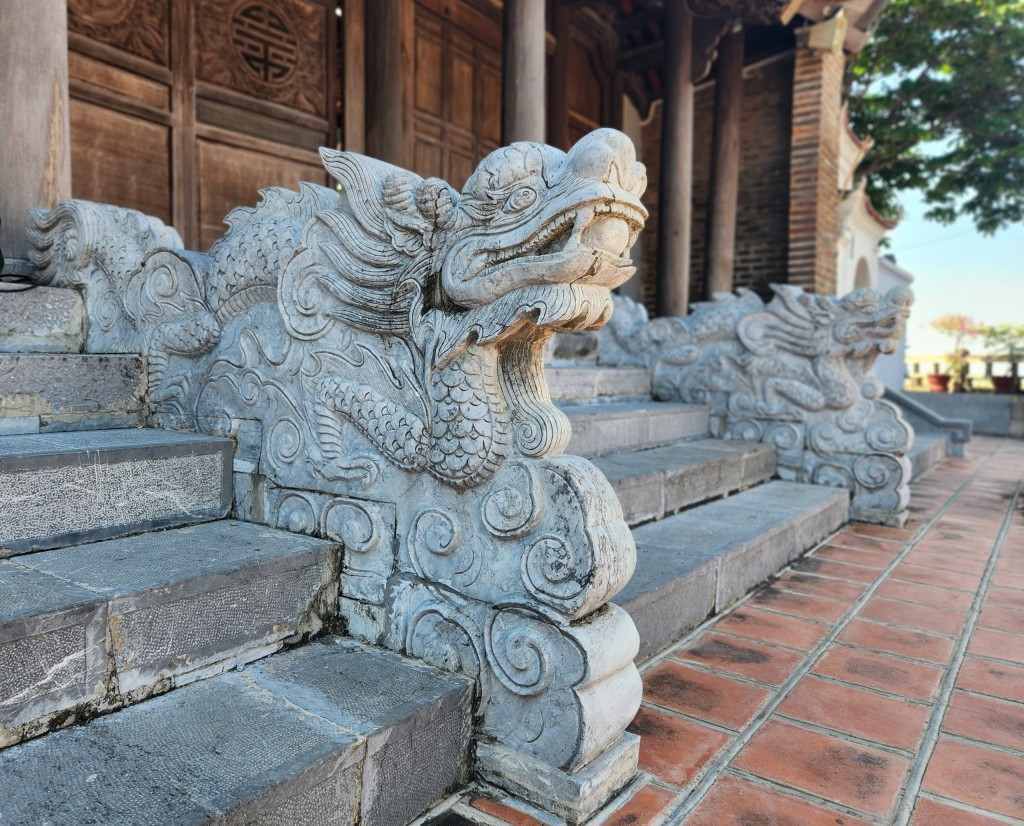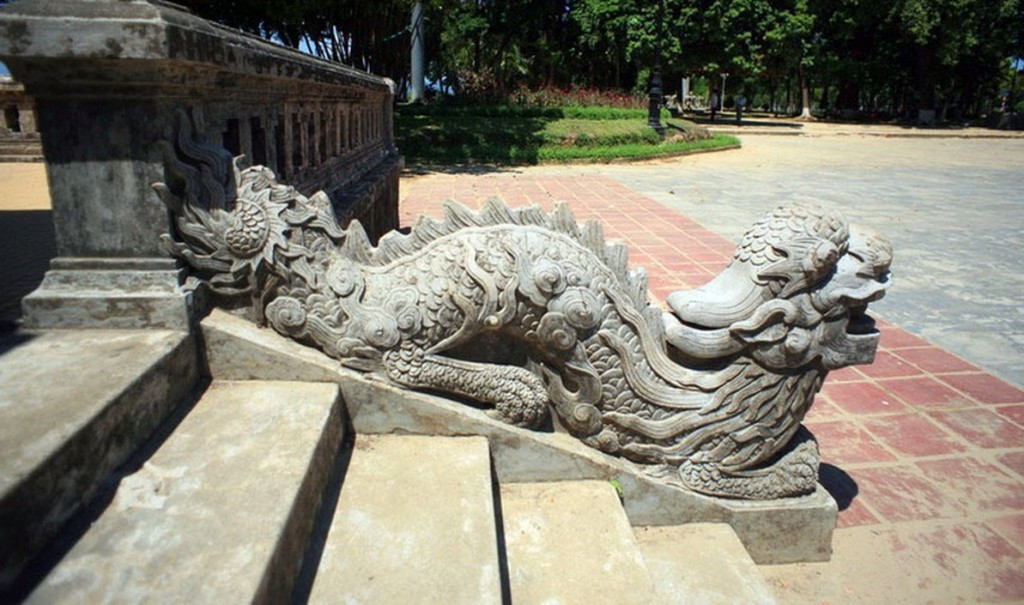No matter how one explains the origin of the dragon, in the minds of traditional Vietnamese people, the dragon is still a brilliant cultural symbol.
 |
| Exquisite dragon-shaped railing at Dinh Chem (Bac Tu Liem, Hanoi) |
From ancient times to the present, the dragon has been considered a symbol with a special position in the culture and beliefs of the Vietnamese people. Therefore, Vietnamese people often honor their origin as "Descendants of the Dragon, Grandchildren of the Fairy" because the dragon is a symbol of pride in lineage and origin.
Dragons appeared very early in myths, legends as well as visual arts of many peoples around the world.
The Four Sacred Animals are four mythical animals of some East Asian countries influenced by Chinese culture, including: Dragon, Unicorn, Turtle, and Phoenix.
These animals originate from 4 spirits: Thanh Long, Bach Ho, Huyen Vu, Chu Tuoc, created by ancient people based on constellations. These spirits are based on 4 elements that make up heaven and earth: Earth, water, fire, wind.
The dragon, a cultural symbol, was born from human efforts to understand and perceive the natural world. However, in both Eastern and Western cultures, the perception of the dragon is determined by the nature and characteristics of each culture.
If the West considers the dragon a symbol of evil, cruelty, an object that humans need to conquer, on the contrary, the East considers the dragon a symbol of goodness, luck and prosperity. Dragons in Eastern legends and myths are often described differently from Western dragons in both appearance and temperament.
In the East, the dragon is a symbol of positive and creative origin, the power of life. The deep origin of this symbol is determined by natural (geographical - climatic) and social (historical - economic) conditions.
The water element is important to Eastern people, so they created the dragon with the first meaning as a symbol of water - prosperity and bountiful harvests.
It is not surprising that the first gods in ancient Eastern beliefs were gods related to water. Therefore, the water god is also the Dragon god.
Later, in the process of formation and development of Eastern peoples, dragons were gradually assigned new meanings suitable to the nature of the era such as symbol of national origin, royalty, nobility, luck, prosperity...
Considered the king of the living world, it is easy to understand that the dragon is a symbol of good luck, fortune and goodness in the East.
In the East, the dragon is considered a zodiac animal, among the 12 animals. The dragon is present in many art forms such as dance, drama; decoration on sculpture, architecture...
Although there is much controversy surrounding the origin of the dragon image, no matter how one explains the origin of the dragon, in the minds of traditional Vietnamese people, the dragon is still a brilliant cultural symbol.
 |
| The elaborate dragon-shaped railing on the steps of Nghenh Luong Dinh or Nghenh Luong Ta (Hue Citadel) |
First of all, because the dragon is a mythical creature that is a synthesis of many real things in nature, the dragon possesses all the superior advantages of the species, in which strength and power to change are two important characteristics.
With the Hong Bang theory, the Vietnamese also consider the dragon a symbol of origin, of race consciousness and national solidarity. The consciousness of “Descendants of the Dragon and Grandchildren of the Fairy” is deeply ingrained in the flesh of every Vietnamese child from the moment they are born.
In its spiritual function, the dragon is understood as a deity. However, this spiritual function of the dragon is often understood to be mainly associated with the function of stabilizing the psychology and educating people.
From a cultural perspective, dragons are a source of artistic inspiration, especially in the visual arts of the Vietnamese. Since the Ly and Tran dynasties, dragons have been placed in the most solemn positions in works of art, such as on the pedestal of the Amitabha Buddha statue at Phat Tich Pagoda, in Chuong Son Tower, and Pho Minh Pagoda.
Our ancestors created the dragon symbol as an expression of the desire to conquer nature and conquer ourselves. Over time, people have "transformed" the dragon symbol and used it for different purposes, but it is the good values of the dragon in the human mind that have ensured its existence and development.
HA (synthetic)